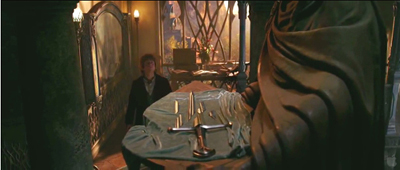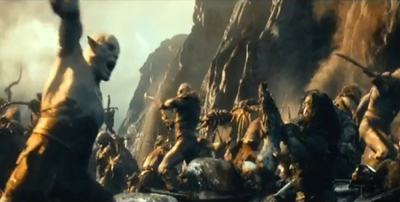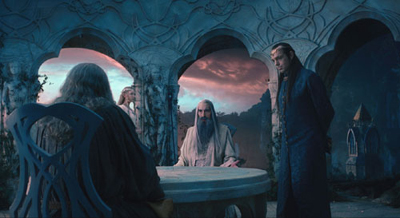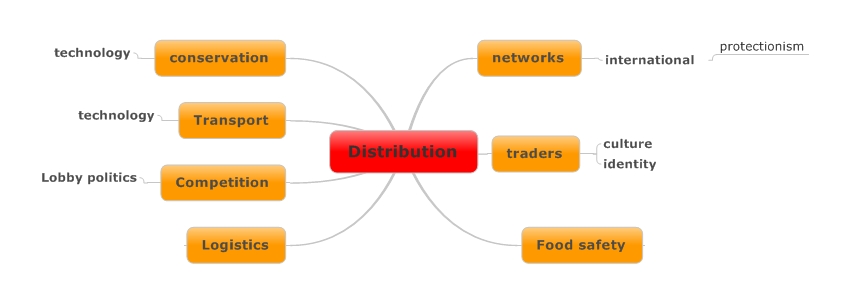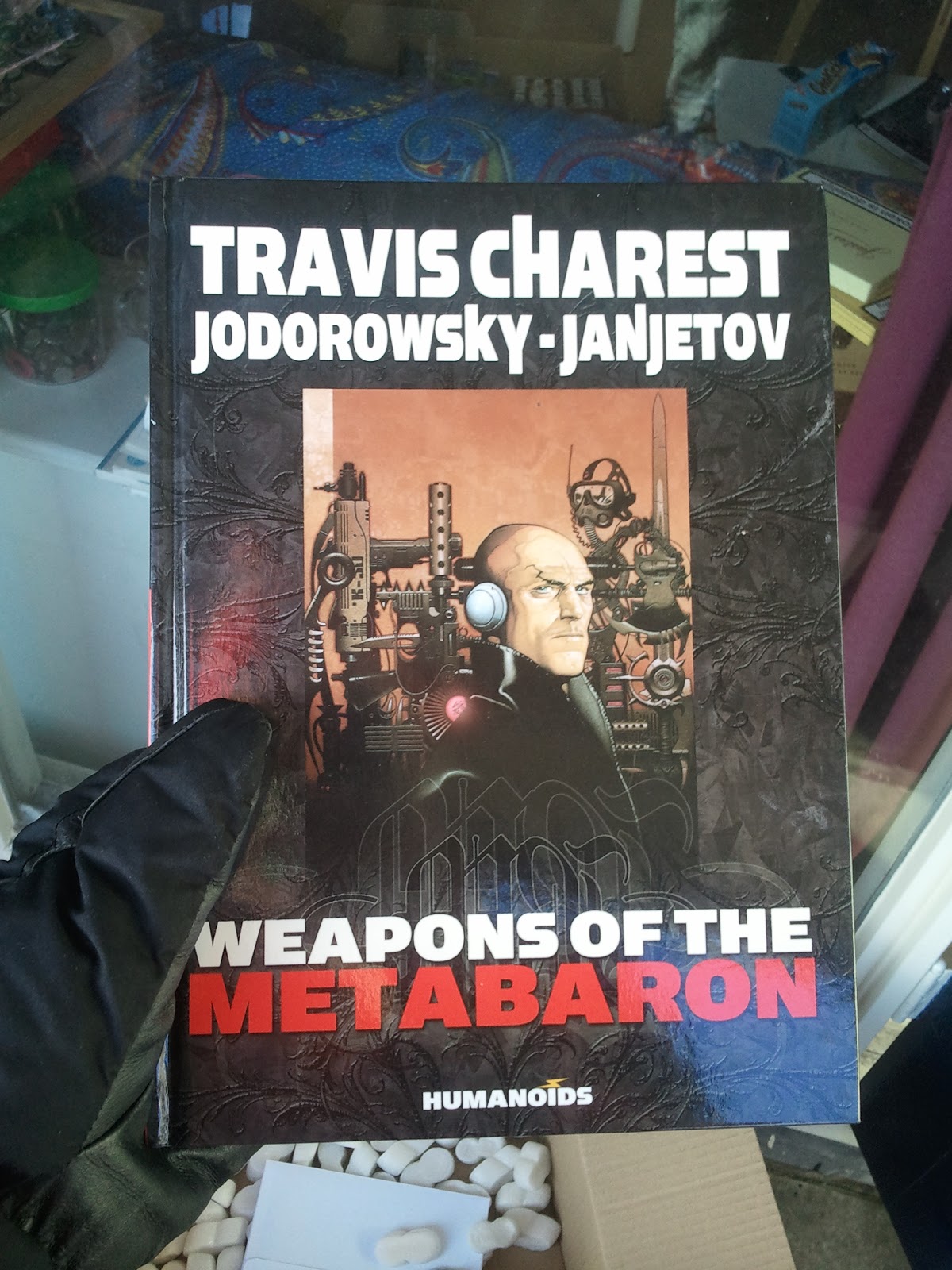Robin Fleming’s
book is a great counterpoint to the political histories of the period. Because
of the archeological evidence the book is strong on demographic, social and
economic developments, and this allows stronger focus on the general population
and women in particular than the written record.
 |
| My battleworn copy |
Especially
the last chapter is a showcase for the power of archaeology to (re)create real stories
of common people from physical evidence. The first part focuses on the high number of women
dying before their 35th birthday (often in childbirth) and its
effects on society, like the many orphans. The second part, recording
a live burial of a struggling woman suggests punishment or ritual burial of
slaves with their masters. And the last one shows the high death toll in towns
and the terrible hygienic conditions of people living close to their neighbours
and animals.
And there's a host of similar episodes spread around the book that I haven't got time to mention here, but give a fresh look at what we call the Dark Ages based on relatively new evidence. But while the
firm foundation in archaeology is the strength of this book, the long,
speculative interpretation occasionally becomes a grind.
The
archeological data frequently challenges the written record. Fleming suggests
that the coming of the ‘Saxons’ (as most scholars now accept, it was a very
mixed population of Germanic people from present day Northern France up to
Denmark) was a lot less violent than suggested by the literary sources which
were written later, sometimes centuries, than the actual events and who had
their own agenda. According to Fleming the kingdoms of the 7th and 8th
centuries used conquest myths to stress their legitimacy.
Archeological finds also point towards the conclusion that Roman economic
decline started a few generations before the legions left for the continent in
410. Population had been declining during this period and continued even faster
as Roman presence ended and political and economic fragmentation set in.
This
suggests in Fleming’s view that there was room for newcomers, while few graves from this period show violent deaths, nor a heavily militarised society. However, I think even
the smaller Romano-British population would maintain a claim to the land and it
is unlikely they would have relinquished it totally without struggle. Also, men dying on the battlefield would not be buried in their home villages.
The
newcomers mixed easily with the Romano-British. Based on
the lack of high status burials in this period, Fleming concludes that the 5th
and 6th centuries saw a remarkably egalitarian society. It also contained
a wide local variation of combinations of Romano-British and Germanic elements,
with individuals picking and choosing elements from different cultures to
create their own styles. Identities became very local, as opposed to the Romano-British elite which had focused on the fashions of its continental counterparts. The immigrants also, even though they described themselves as Saxons or Angles, were in fact leading very different lives from their grandparents.
Would social structures be imported from the
continent with the immigrants or would they assimilate into some sort of
‘melting pot’ as in the United
States in the 19th century?
From the
late 6th / early 7th century there are signs of economic
recovery and rapid political concentration. First, a few dozen regional powers
developed, which then coalesced into stronger kingdoms, like Mercia, that
dominated the others. However, the subjugated kingdoms retained a high degree
of independence. But the high level of competition forced all kings to find
ways to stay on top of the political food chain. This found expression in increasingly high status burials.
Kings
stimulated urban renewal by granting lands (hagae)
to lords and monasteries. Two new sources of income for kings in the 7th century were the tolls levied on town markets and industry, as well as coin
minting. The increasing number of locally produced coins found in hoards and around commercial buildings shows that money
returned to the economy.
Christianity
also offered several boons to ambitious kings. First of all, clerics could
provide a powerful administrative force to a king, increasing the utility of
his resources. Secondly, Christianity became a fashionable status attribute, and
as it became more accepted by powerful lords, it became expedient for their
followers and subjects to convert as well. This would lead to a chain reaction
of conversions down client networks. But the archeological evidence suggests
that many pagan symbols and rituals continued or were incorporated in Christian
burial rites.
While
during the 7th and 8th centuries the general tendency was
towards concentration and consolidation, the coming of the Vikings overthrew
the status quo. In certain parts of Britain it seems that regular
institutions collapsed, and in others it forced them to adapt to the crisis.
The coming
of the norsemen for example strengthened the power of the Saxon kings, as they found
clerical and secular lords more easily accepted their protection. In the 9th
century, the resurgent Saxons strove to bind the recovered territories more
firmly to them and transferred their institutions as well as their authority
(unlike the 7th century kings).
A major
new Saxon institution was the burh, the
fortified town. The support for protection of these towns was linked to
landholding. The burhs developed into
central places, combining trade and administrative functions, with the sheriff
(shire-reeve) as the representative of royal authority. Finds reveal commercial expansion and increasing sophistication.
While the
Danes had been able to bring a large area of England under their control, and
many of the erstwhile raiders settled, archeological finds suggest that the
norsemen mixed as easily with the Saxons and other people in Britain as the
Saxons had done with the Celts and Romano-British in the 5th and 6th
centuries. And again the genetic mix was matched by social and cultural
interaction that defies orderly generalisation.
Fleming
puts much store on bottom up agency and tends to interpret developments not as
the result of kings' decisions, but of social phenomena driven by local lords
and townspeople. Money in this period was not primarily a means of market
transactions, but a means to monetise tribute, so lords and kings could easily
buy status goods and pay for communal works. Local lords were able to impose
tribute on their subjects. The physical evidence for this development shows
more high status burials, suggesting more elaborate social stratification. By
the 11th century the Saxon thegn
had become more like a gentleman farmer than a warrior elite. That role was
increasingly played by royal household troops like the huscarls.
For
wargamers the eclectic mix of
genes, cultures and identities suggests that we have a lot of
freedom to create our own stories. In the fragmented and dynamic societies of
these two periods, any story we can come up with can probably have occurred
somewhere.
What chronicles call Saxons, could also be Franks, Frisians or even germanified Britons. Vikings can be Swedes but also assimilated inhabitants of the Orkneys. Clerics can be academic abbots sent from Rome but also local priests with little knowledge of the scriptures and their own ideas about dogma. Fact will often prove stranger than fiction.








